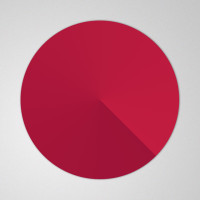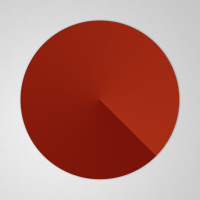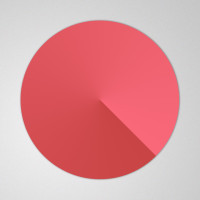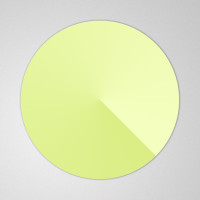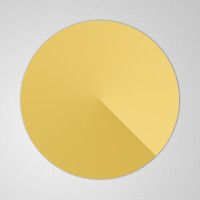Guides
Introduction to Wine with Billington’s
Wine is more than just a drink; it’s a lifestyle, a survey into history, a gastronomic adventure, a study in farming, and a way to explore different cultures.
However, with so many different angles to approach wine, how do you get started?
Fortunately, there are only a few basic techniques to learn, as well as some common wine knowledge. With some practice, you’ll be over the hump of being a rudimentary wine “dabbler,” to becoming an upstanding wino, capable of ordering wine like a pro.
Learn the different wine styles, wine glasses and tips on tasting like a wine connoisseur.
- Wine Styles
- With over 1300 types of wine out there, it’s better to start with just the basics. Discover the most popular high quality wine varieties–from Albariño to Zinfandel. In the Wine for Beginners Chart , you’ll find them arranged by colour.
- Sparkling Wines
- Dry White, Rich White and Sweet White Wines
- Rosé Wines
- Light, Medium and Bold Red Wines
- Dessert Wines
Wine Glasses
Which glass do you use for Pinot Noir, Cabernet Sauvignon and Chardonnay? You can discover every type of wine glass out there, or just start off with a basic set.
Secrets to Reading Wine Labels
On wine labels “Reserve” doesn’t officially mean anything, but there are a few tips you can learn. For instance, the alcohol level says a lot about the style of wine and the vintage tells you a lot about the quality.
Calories in Wine
Even though alcoholic beverages aren’t required to list calories, that doesn’t mean they are calorie-free!
Common Bottle Shapes
It doesn’t matter what type of bottle you use (unless it’s for sparkling). However, there are some standards in the business. Did you know that Pinot Noir, Syrah, and Grenache are almost always bottled in a more feminine style low-shoulder bottle? Also, Cabernet Sauvignon and Merlot are nearly always bottled in a masculine high-shoulder bottle. These facts can help you identify what’s inside the bottle when the variety is not listed.
Five Main Types of Wine
All wines can be organized into five basic groups. Within each group there are hundreds of different grape varieties and winemaking techniques!
- Red Wine
- Still wine made with black grapes. Red wines range from light to bold.
- White Wine
- A still wine produced from white and occasionally black grapes. Flavours in white wines span from light to rich.
- Rosé Wine
- Still wine from black grapes produced by removing the skins before they stain the wine deep red. Rosé is also made by blending red and white wine together. Both dry and sweet styles of rosé are common.
- Sparkling Wine
- A style of winemaking involving a secondary fermentation that makes bubbles! Sparkling wine can be red, white, or rosé and ranges from lean and dry, to rich and sweet.
- Dessert Wine
- A style of winemaking involving fortifying wine with spirits. Typically, dessert wines taste sweet, but many dry, fortified wines exist, such as dry Sherry.
Common Types of Wine (the top varieties)

Types of Wine Grapes
Wine is made with grapes, but not typical table grapes you’ll find at the grocery. Wine grapes (latin name: Vitis vinifera) have thick skins, are small, sweet, and contain seeds.
There are many different kinds of wine grapes–over a thousand,– but here some common choices you’ll find at Billington’s!
Cabernet Sauvignon
“Kab-er-nay Saw-vin-yawn”
Taste: Black Cherry, Black Currant, Baking Spices, and Cedar (from oak)
Style: Full-Bodied Red Wine
Description: Cabernet Sauvignon is a full-bodied red grape first heavily planted in the Bordeaux region. Today, it’s the most popular wine variety in the world!
Wines are full-bodied with bold tannins and a long persistent finish driven mostly by the higher levels of alcohol and tannin that often accompany these wines.
Food Pairing: lamb, beef, smoked meats, French, American, firm cheeses like aged cheddar and hard cheeses like Pecorino.
Syrah
“Sear-ah” (aka Shiraz)
Taste: Blueberry, plum, tobacco, cured meat, black pepper, violet
Style: Full-Bodied Red Wine
Description: Syrah (aka Shiraz) is a full-bodied red wine that’s heavily planted in the Rhône Valley in France and Australia. The wines have intense fruit flavors and medium-weight tannins. Syrah is commonly blended with Grenache and Mourvèdre to create the red Rhône blend. The wine often has a meaty (beef broth, jerky) quality.
Food Pairing: lamb, beef, smoked meats; Mediterranean, French, and American firm cheeses like white cheddar, and hard cheeses like Spanish Manchego.
Zinfandel
“Zin-fan-dell”
Taste: A broad, exotic array of fruits from stone (overripe nectarine), to red (raspberry, sour cherry), to blue (plum, blueberry), to black (blackberry, boysenberry), Asian 5 Spice Powder, Sweet Tobacco
Style: Medium-bodied to full-bodied Red Wine
Description: Zinfandel (aka Primitivo) is a medium-bodied red wine that originated in Croatia. Wines are fruit-forward and spicy with a medium length finish. Zinfandel is a red grape that may be better known in its pink variation, White Zinfandel.
Food Pairing: chicken, pork, cured meat, lamb, beef, barbecue, Italian, American, Chinese, Thai, Indian, full-flavored like cheddar and firm cheeses such as Manchego
Pinot Noir
“Pee-no Nwar”
Taste: Very red fruited (cherry, cranberry) and red-floral (rose), often with appealing vegetal notes of beet, rhubarb, or mushroom
Style: Lighter-bodied Red Wine
Description: Pinot Noir is a dry, light-bodied red that was first widely planted in France. The wines typically have higher acidity and a soft, smooth, low-tannin finish.
Food Pairing: chicken, pork, veal, duck, cured meat, French, German, cream sauces, soft cheeses, nutty medium-firm cheeses like Gruyère
Chardonnay
“Shar-dun-nay”
Taste: Yellow citrus (Meyer lemon), yellow pomaceous fruits (like yellow pear and apple), tropical fruits (banana, pineapple), and often a touch of butterscotch, vanilla or toasted caramel notes from oak
Style: Medium- to Full-Bodied White Wine.
Description: Chardonnay is a dry full-bodied white wine that was planted in large quantities for the first time in France. When oak-aged, Chardonnay will have spicy, bourbon-y notes. Unoaked wines are lighter and zesty with apple and citrus flavors. Chardonnay is the white grape of Burgundy.
Food Pairing: lobster, crab, shrimp, chicken, pork, mushroom, French, cream sauces, soft cheeses such as triple cream brie, medium-firm cheeses like Gruyère
Sauvignon Blanc
“Saw-vin-yawn Blonk”
Taste: Aggressively-citrus-driven (grapefruit pith), with some exotic fruits (honeydew melon, passion fruit, kiwi) and always an herbaceous quality (grass, mint, green pepper)
Style: Light- to Medium-Bodied White Wine
Description: Sauvignon Blanc is a dry white grape first widely planted in France. Wines are tart, typically with herbal, “green” fruit flavors.
Food Pairing: fish, chicken, pork, veal, Mexican, Vietnamese, French, herb-crusted goat cheese, nutty cheeses such as Gruyère
Pinot Gris
“Pee-no Gree” (aka Pinot Grigio)
Taste: Delicate citrus (lime water, orange zest) and pomaceous fruits (apple skin, pear sauce), white floral notes, and cheese rind (from lees usage)
Style: Light-Bodied White Wine
Description: Pinot Gris is a dry light-bodied white grape that is planted heavily in Italy, but also in France and Germany. Wines are light to middle-weight and easy drinking, often with some bitter flavor on the palate (bitter almond, quinine)
Food Pairing: Salad, delicate poached fish, light and mild cheeses
Riesling
“Reese-ling”
Taste: Citrus (kefir lime, lemon juice) and stone-fruit (white peach, nectarine) always feature prominently, although there are also usually floral and sweet herbal elements as well.
Style: Floral and fruit-driven aromatic white that comes in variable sweetness. Some producers choose not to ferment all the grape sugar and therefore make the wine in an “off-dry” style.
Description: Always very high in acid, when made as a table wine Rieslings can be harmoniously sweet (sweet and sour) or dry (very acidic). The wine is polarizing because some people find dry styles too acidic and sweet styles too cloying, but sweetness is always a wine making decision and not inherent to the grape.
Food Pairing: chicken, pork, duck, turkey, cured meat, Indian, Thai, Vietnamese, Moroccan, German, washed-rind cheeses and fondue
The Wine Colour Chart
Explore the wine colour chart and understand what aspects of wine affect its colour.
Wine Colour Chart
What Different Wine Colours Mean
Ever wonder if a Chardonnay you’re about to buy is going to be rich or lean? Believe it or not, the answer is right in front of your eyes. The clues lie in a wine’s colour. Many “buttery” Chardonnays are more extracted, which means they’re usually a rich gold colour.
A wine’s colour can also help you if you’re interested in collecting wine. You can use wine colour cues to determine its potential to cellar. For instance, a Syrah that tinges blue on the rim has lower acidity. Acidity is one of the primary traits of wines that age well.
Expert blind tasters take serious note of the colour of wine. Amongst these experts are advanced sommeliers who must be able to accurately blind taste 6 wines to earn their credentials.
Whether or not you’re aiming for a life in the restaurant industry, you can still use wine colours to better define favourites.
Red Wine Colours
Light-Bodied Red Wine
Light-bodied red wines tend to have a lighter and more translucent colour. (you’ll be able to see through them.) Hues range from from a bright purple to garnet. e.g. Pinot Noir, St. Laurent, Zweigelt, and Gamay
Medium-Bodied Red Wine
Medium-bodied red wines tend to medium-rich colours. This range of wines is diverse and includes Garnacha, Sangiovese, and Zinfandel. Discover more types of wine.
Full-Bodied Red Wine
Full-bodied red wines are often deeply coloured and this indicates a possible presence of higher tannin. These wines are highly extracted and opaque. e.g. Syrah, Malbec, Mourvèdre, and Cabernet Sauvignon.
Old Red Wine
When a red wine is far past its prime it will be a dull brown colour. Many wines will last 20 years or more without showing much colour change. Merlot and Nebbiolo stain orange earlier than other types of wine.
Rosé Wine
Rosé wines are made with regular red grapes such as Mourvedre, but the grape skins aren’t exposed to the juice for as long. The result is a much more pale red wine. Depending on the variety used, a rosé can range from pale salmon (Pinot Noir) to magenta (Garnacha).
Seeing Blue? A bluish tint (towards the rim) indicates lower acidity (e.g. a higher pH).
White Wine Colours
Light-Bodied White Wine
A light-bodied white wine can range from clear to a pale yellow-green hue. Most of this style of wine is meant to be enjoyed young and ice-cold. e.g. Pinot Grigio, Albarino, Vinho Verde, Muscadet
Medium-Bodied White Wine
The majority of white wines fall into the medium-bodied category with a pale yellow-gold hue. e.g. Sauvignon Blanc, Unoaked Chardonnay, and Chenin Blanc.
Full-Bodied White Wine
A colour of white wine that can be produced either by a free-run red wine such as White Pinot Noir or a highly extracted white wine. Often these wines have less acidity and use oak aging to add creaminess and vanilla aromas. e.g. Chardonnay, Viognier, and Marssanne.
Old White Wine
Very few white wines are made to last for more than a couple of years. Old white wines lose their sheen and become increasingly more dull over time. Because of light-sensitivity, white wines will become more orange over time.
Source: WineFolly


